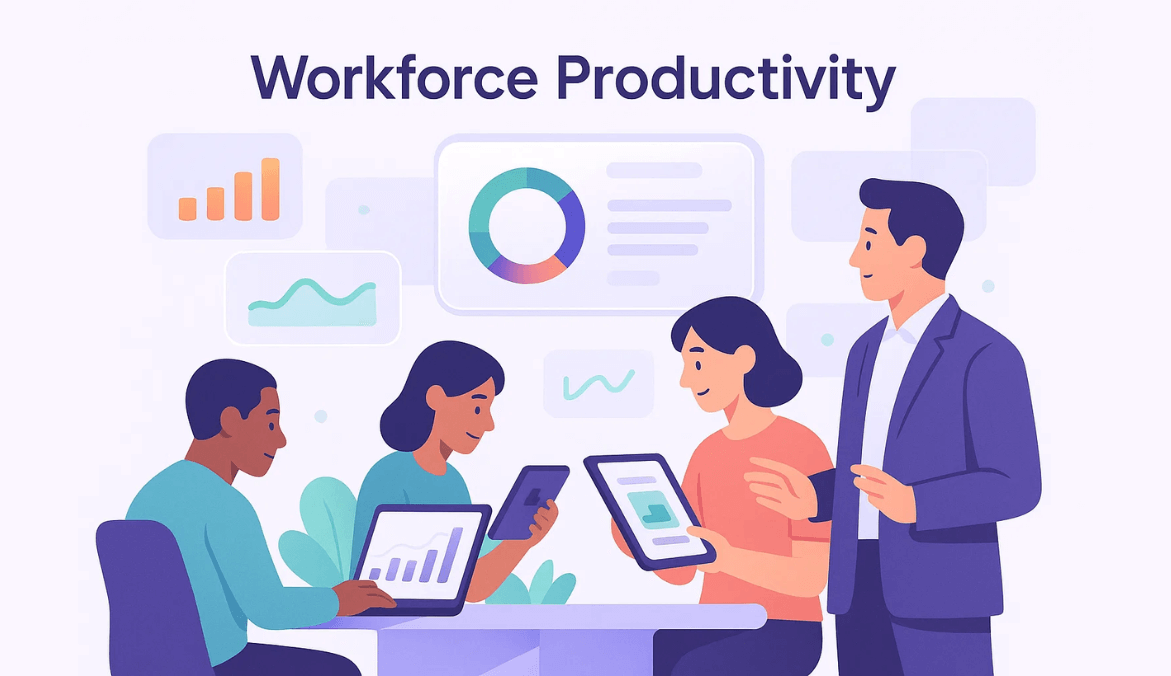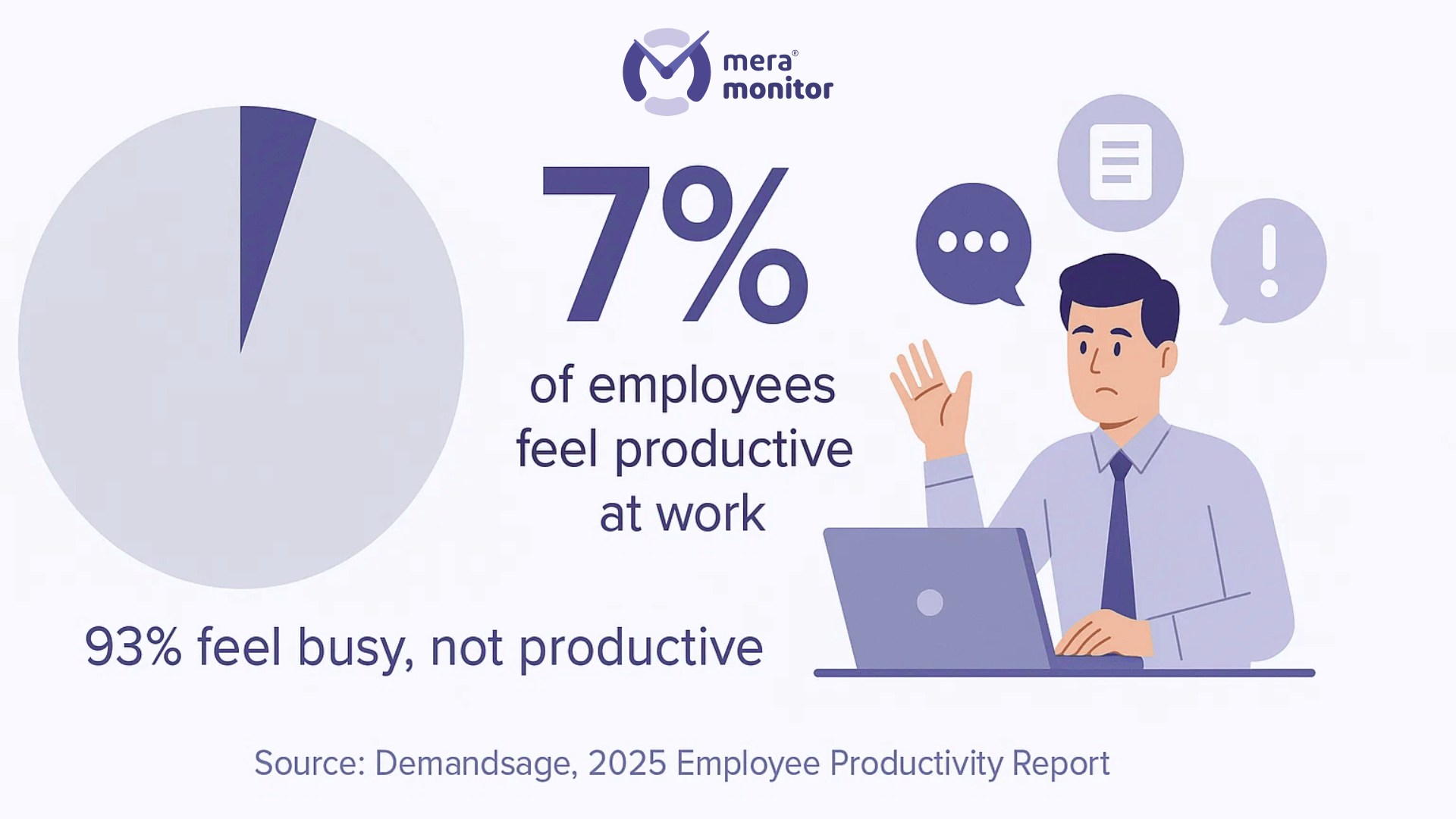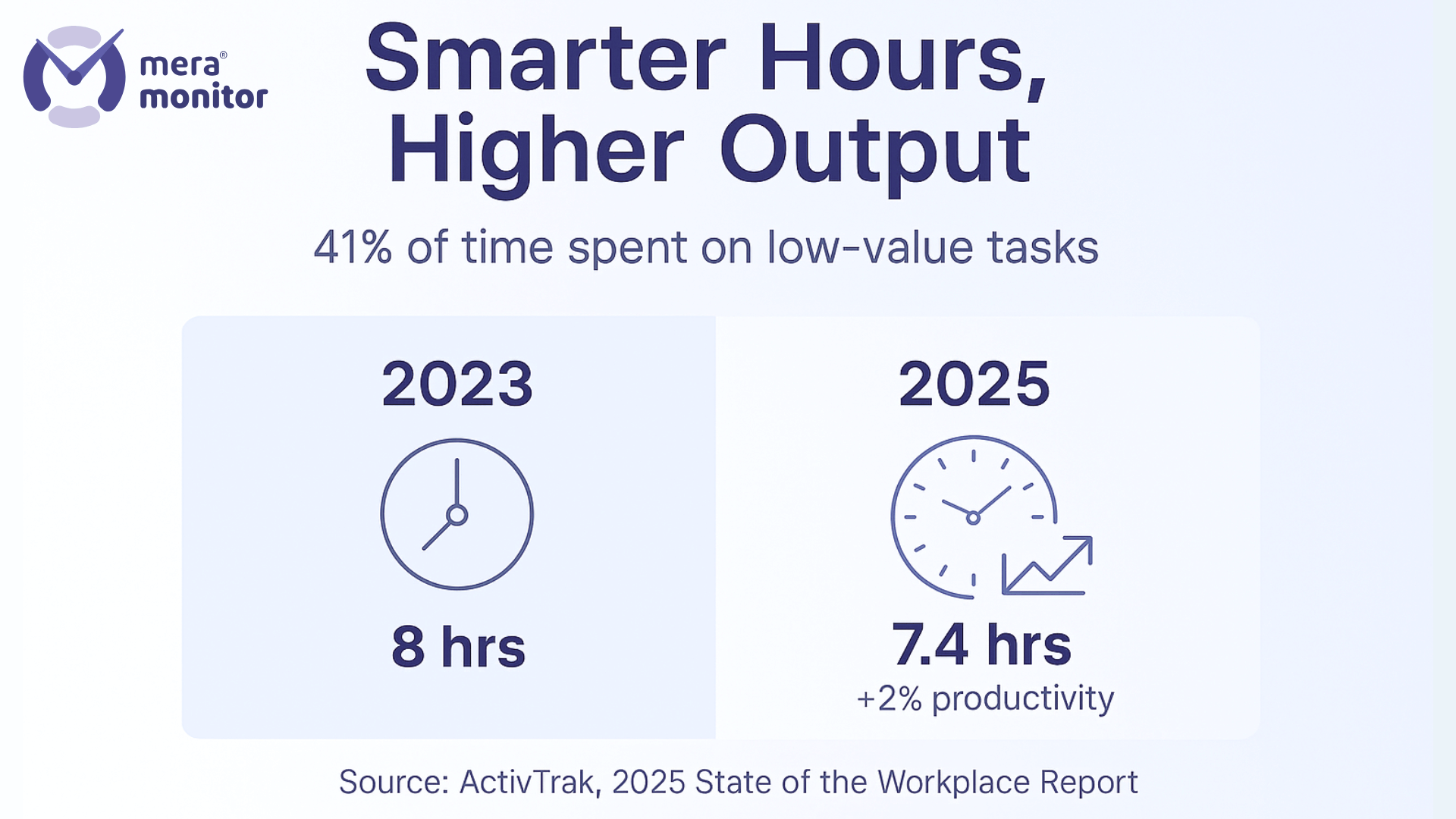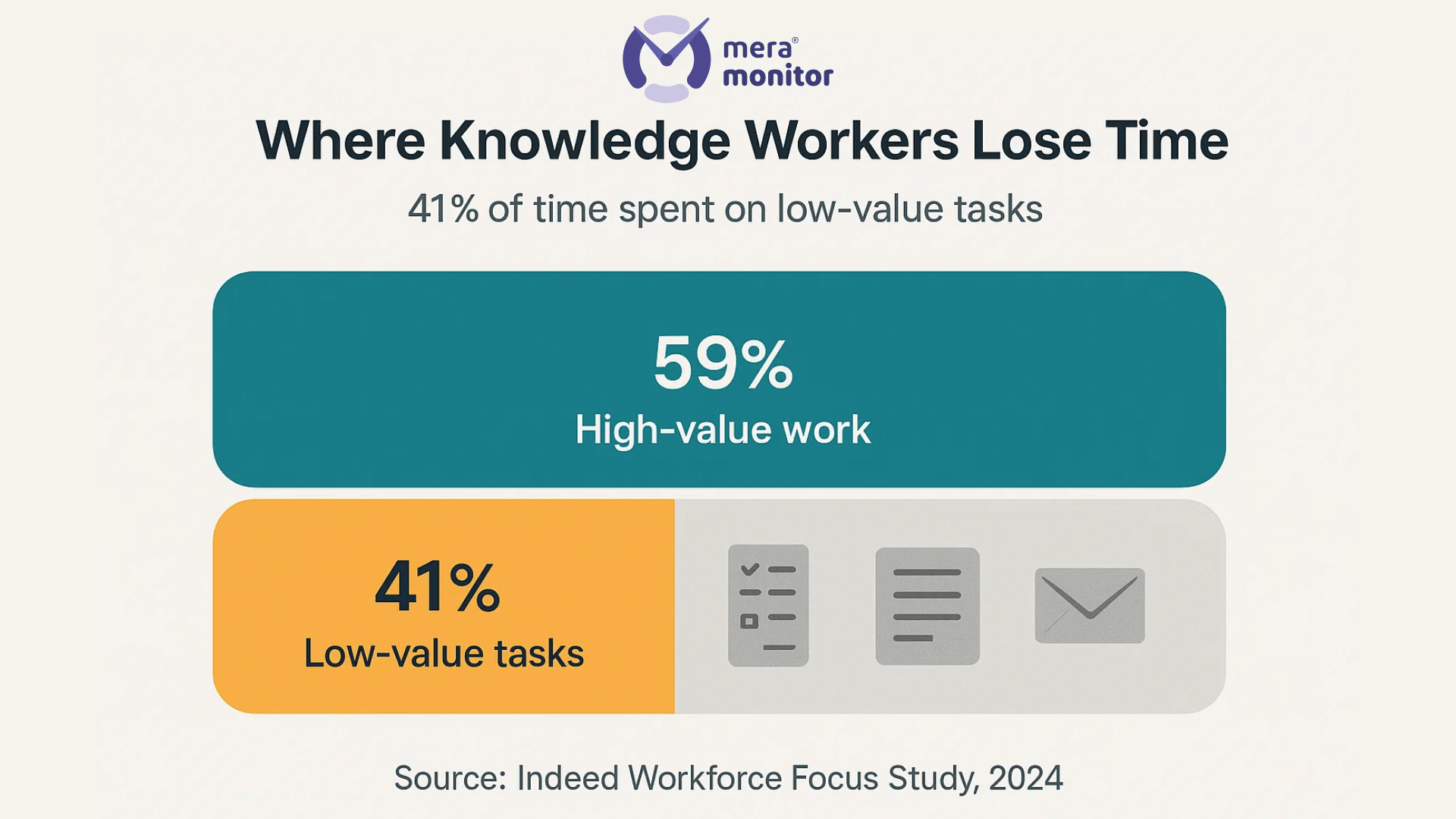Introduction
If there’s one lesson the modern workplace has taught us, it’s this — being busy isn’t the same as being productive.
Hybrid setups, AI assistants, and endless notifications have blurred the line between activity and impact. That’s why, more than ever, companies are focusing on workforce productivity — not just how much work gets done, but how effectively and sustainably it happens.
This guide unpacks what workforce productivity truly means, how to measure it, and how to improve it using practical, real-world methods that have worked across teams and industries.
What Is Workforce Productivity?
At its core, workforce productivity is a measure of how efficiently your people turn time, effort, and resources into valuable outcomes.
A simple formula looks like this:
Workforce Productivity = Total Output ÷ Total Input (Time, Cost, or Effort)
But productivity isn’t only about speed or efficiency. It’s about effectiveness — doing the right things, not just doing things right.
From experience:
When I implemented productivity tracking for a distributed software team, we initially measured only utilization — how many hours each person logged. It looked great on paper, but burnout followed quickly. Once we began tracking throughput and engagement alongside utilization, overall performance rose by 25% and morale improved dramatically.
Takeaway: Don’t just measure time worked — measure value created.
According to a 2025 report, just 7% of employees believe they are productive during their workday.
Why Workforce Productivity Matters Now
In 2025, every company is under pressure to do more with less — tighter budgets, leaner teams, and higher customer expectations.
Improving workforce productivity leads to:
- Faster delivery cycles
- Greater employee satisfaction
- Better profitability without extra headcount
The hybrid and AI-driven era has also changed how we define “productive.” It’s no longer about clocking more hours — it’s about achieving consistent, high-quality results without exhausting your people. From the 2024-25 “State of the Workplace” report by ActivTrak, where average workday duration reduced by 7% (~36 minutes) yet productivity rose by 2%.
How To Measure Workforce Productivity (The Smart Way)
Here’s a 5-pillar framework I’ve seen consistently deliver results:
- Focus Time: Hours spent on deep, undisturbed work.
- Throughput: Tasks, tickets, or deliverables completed per period.
- Quality: Rework rates, errors, or customer satisfaction.
- Engagement: Pulse surveys, participation, absenteeism.
- Workload Balance: Utilization and capacity distribution.
A study found that knowledge workers can spend up to 41% of their working time on administrative or non-core tasks.
💬 Expert insight:
In over 20 years of working with teams, I’ve noticed a clear pattern — when focus time consistently hits about 60% of total hours, throughput jumps by roughly 20% without any increase in overall work hours.
Pro Tip:
Use dashboards and analytics tools like Mera Monitor or Karya Keeper to automate tracking and visualize performance — but remember, data is a guide, not a surveillance tool. Always keep the conversation human.
12 Proven Strategies to Improve Workforce Productivity
You don’t need fancy frameworks. You need consistency, clarity, and respect for people’s time.
Here are 12 actionable strategies you can start implementing today.
1. Cut the Meeting Clutter
Audit your calendar ruthlessly. Move updates to async channels and keep only decisions in live meetings.
“At one mid-sized tech firm, we introduced ‘No-Meeting Wednesdays.’ It freed up nearly 8 extra focus hours per person each month — project delivery time dropped by 12% in a single quarter.”
2. Set Clear OKRs and WIP Limits
Unclear priorities drain focus. Use OKRs (Objectives & Key Results) and cap the number of “in-progress” tasks.
Less multitasking = faster, cleaner work.
3. Enable Role-Based Workspaces
Overloaded dashboards distract people. Let teams see only what’s relevant to them.
It’s like decluttering a desk — focus improves the moment noise disappears.
4. Upskill Continuously
Skill gaps are silent productivity killers. Use short, role-based micro-learning sessions and peer demos instead of yearly training marathons.
5. Automate Repetitive Tasks
Anything done more than twice a week should be automated — status reminders, report generation, follow-ups.
Automation doesn’t replace people; it amplifies them.
6. Foster Recognition and Feedback
Acknowledging effort builds intrinsic motivation. Create quick shout-outs or “micro-awards” tied to measurable outcomes, not hours logged.
7. Encourage Ethical Transparency
If you use monitoring tools, be clear about why.
Transparency turns monitoring into mutual improvement — not micromanagement.
8. Design for Deep Work
Introduce quiet hours and focus blocks. Encourage people to batch communication.
“When we coached a hybrid engineering team to block 2×90-minute focus sessions daily, their sprint completion rate rose by 18% within a month.”
9. Standardize Handoffs and ‘Definition of Done’
Missed context creates rework. Define what “done” means for every deliverable. Use shared templates and checklists for smoother collaboration.
10. Tame Tool Sprawl
Using 10 different apps to manage one project wastes hours.
Integrate your project, time, and reporting tools — platforms like Karya Keeper can centralize this effortlessly.
11. Plan Around Capacity, Not Aspirations
Stop overcommitting. Plan workloads based on realistic capacity, skill mapping, and past data.
When people aren’t overloaded, their quality soars.
12. Hold Weekly Reflection Rituals
Review 5 key metrics every week.
“In my experience, teams that hold a 20-minute reflection session every Friday sustain productivity improvements 3x longer than those relying solely on reports.”
Small improvements, compounded weekly, create lasting cultural change.
Building a Workforce Productivity Dashboard
A good dashboard doesn’t just show data — it tells a story.
Focus on these core widgets:
- Focus vs. idle time
- On-time delivery rate
- Task throughput
- Rework and quality trends
- Engagement pulse
Start small, track trends, and celebrate improvements. The goal isn’t perfection — it’s visibility and progress.
The 90-Day Workforce Productivity Plan
Transforming productivity doesn’t have to take forever — but it does require structure.
Over the years, I’ve found that a 90-day rollout strikes the perfect balance between momentum and sustainability. It’s long enough to see real change, yet short enough to keep teams engaged.
Here’s how to make it work step by step
Days 1–30: Establish Baseline & Buy-In
This phase is all about clarity and credibility. Before you can improve productivity, you need to understand where you stand — and earn your team’s trust.
Key actions:
- Audit existing workflows: Identify where time goes — meetings, reports, task handoffs, etc.
- Select 4–5 key metrics: Stick to the 5-pillar model (focus time, throughput, quality, engagement, balance).
- Run a productivity pulse survey: Ask people what’s blocking their output — their answers often reveal more than reports.
- Communicate the “why”: “We’re measuring to improve the system, not to police individuals.” This single sentence can make or break adoption.
Expected outcomes:
✅ Baseline metrics established
✅ Productivity pain points mapped
✅ Leadership and team buy-in secured
Days 31–60: Pilot, Test & Iterate
This is your learning lab phase — small enough to manage risk, but large enough to generate meaningful insights.
Key actions:
- Choose one pilot team or department: Ideally a group open to experimentation.
- Introduce the productivity dashboard: Visualize focus time, throughput, and quality.
- Run weekly reviews: Discuss insights, not just numbers. For example, if idle time spikes, ask why, not who.
- Tweak tools and policies: Automate manual reporting, adjust meeting cadences, or simplify workflows.
- Document quick wins: Small wins — like “2 hours saved per week” — build momentum faster than big speeches.
Expected outcomes:
✅ Early data validation
✅ Clear demonstration of impact
✅ Lessons learned for scaling
Expert tip: “In every pilot I’ve led, the teams that co-create their metrics are the ones that sustain results. Ownership drives improvement more than oversight ever can.”
Days 61–90: Scale, Sustain & Celebrate
You’ve got proof that it works — now it’s time to roll it out organization-wide, carefully and transparently.
Key actions:
- Train managers on interpretation: Teach them to coach using data, not control with it.
- Standardize rituals: Weekly reflection sessions, monthly dashboard reviews, and quarterly retrospectives.
- Recognize contributors: Celebrate the individuals or teams who embraced the process early — they’ll become your internal champions.
- Refine your playbook: Record what worked and what didn’t; this becomes your internal “Productivity Manual.”
Expected outcomes:
✅ Systemic adoption
✅ Sustained improvement through habits
✅ Productivity embedded in culture
From experience: “When I worked with a distributed service team, we turned these 90 days into a rhythm — every quarter became a mini productivity sprint. Within six months, their on-time delivery jumped 22%, and employee engagement scores hit an all-time high.”
Industry-Specific Productivity Levers
Every industry defines productivity differently — but the goal is the same: clarity and outcomes.
| Industry | Top Metrics | Common Bottleneck |
|---|---|---|
| IT & Engineering | Cycle time, deployment frequency, bug fix rate | Context switching |
| BPO & Support | Ticket resolution time, quality, CSAT | Overwork and fatigue |
| Professional Services | Billable hours, utilization, project margin | Poor scope management |
| HR & Operations | Time-to-hire, onboarding speed, internal response time | Manual reporting |
Ready to Turn Workforce Insights into Real Results?
Improving workforce productivity isn’t just about tracking hours — it’s about understanding how work happens and helping teams perform at their best.
That’s exactly what Mera Monitor does.
It gives you clarity, transparency, and actionable data — without micromanaging your people.
- Track focus time, activity trends, and engagement
- Identify productivity blockers in real time
- Build trust with ethical, privacy-first monitoring
Start building a more productive, transparent, and data-driven workplace today.
Final Thoughts
Improving workforce productivity isn’t about squeezing more from people — it’s about helping them do their best work within the same hours.
When you align clarity, tools, and trust, productivity becomes a culture, not a metric.
See how privacy-first analytics can turn insights into impact — start your free trial at Mera Monitor
FAQs
It’s how effectively your team turns time and effort into valuable output — sustainably.
Use metrics like focus time, throughput, quality, and engagement instead of just hours.
Focus time %, throughput rate, rework %, engagement pulse, and on-time delivery.
AI boosts productivity by automating low-value tasks and freeing up time for strategic work — but only when paired with human oversight and clarity.
Yes — when it’s transparent, consent-based, and aimed at improvement rather than surveillance.
 Gift Card ₹999
Gift Card ₹999




